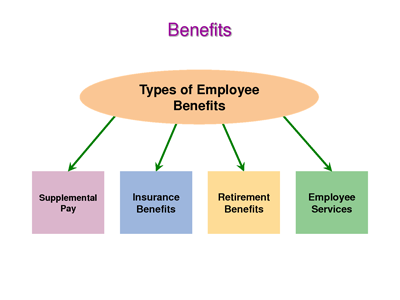As digital payments become the norm, virtual cards are rapidly emerging as a go-to solution for consumers and businesses seeking secure, flexible transaction options. Unlike traditional plastic cards Virtual Cards exist only in digital form and are primarily used for online purchases. They provide the same functionality as physical debit or credit cards but with added layers of security and control. However, not all virtual cards are created equal. To get the maximum benefit from this technology, it’s essential to understand the top security features to look for in a virtual card.
Table of Contents
Single-Use or Disposable Card Numbers
One of the most powerful security features a virtual card can offer is the ability to generate single-use or disposable card numbers. These temporary card numbers are valid for only one transaction and then automatically expire. This dramatically reduces the risk of fraud, especially when shopping on unfamiliar or unsecured websites. Even if a hacker manages to obtain your card details, the information is useless after one use. Disposable cards are ideal for online shopping, one-time subscriptions, or trial services where you want to avoid recurring charges.
Merchant-Locking Functionality
Another must-have security feature is merchant-locking. This allows you to tie a virtual card number to a specific merchant. If someone attempts to use the card elsewhere, the transaction will be denied. This feature is particularly effective in preventing unauthorized charges, especially in the case of data breaches. Merchant-locking is ideal for subscriptions and recurring payments since it ensures that only the intended vendor can charge your card. It also makes it easier to monitor spending and quickly identify suspicious activity.
Spending and Time Limits
Virtual cards often come with the option to set spending caps and expiration dates, which are essential for financial control and security. You can establish a daily, weekly, or per-transaction limit, ensuring that even if your card is compromised, the damage is minimal. Similarly, setting an expiration date—whether for a single day or a few months—adds a timed safeguard. These limits are especially useful for managing subscriptions, employee expenses, or children’s online purchases. They allow users to minimize risk while staying in control of their finances.
Instant Issuance and Deactivation
Speed and flexibility are key features in digital security. A top-tier virtual card provider should allow you to instantly generate and deactivate cards on demand. Whether you’re making a last-minute purchase or responding to suspicious activity, the ability to create or cancel a card immediately adds an essential layer of protection. This is particularly useful for businesses managing multiple cards or individuals who frequently shop online. Instant issuance also enables users to act quickly in emergencies, unlike physical cards, which require waiting for delivery or replacement.
Real-Time Transaction Alerts
Real-time notifications are a proactive way to monitor virtual card activity. As soon as a transaction is made, you should receive an alert via SMS, email, or app notification. These instant updates help detect unauthorized activity immediately, allowing you to take action before further damage occurs. Real-time alerts also improve transparency and make it easier to keep track of multiple transactions, especially for those who use virtual cards frequently or manage business expenses. It’s one of the simplest yet most effective ways to maintain security.
Tokenization and Encryption
Behind the scenes, strong encryption and tokenization are critical for keeping your financial data secure. Tokenization replaces your actual card number with a random string of numbers (a token) during transactions. This means your real card information is never exposed, even to the merchant. Combined with encryption protocols, which protect data in transit and at rest, this technology ensures that sensitive information remains secure from end to end. Always choose a virtual card provider that clearly states their use of advanced encryption and tokenization standards.
Two-Factor Authentication (2FA)
Two-factor authentication adds an additional barrier between your virtual card and unauthorized users. This security measure requires a second form of identification—such as a code sent to your mobile device or biometric verification—before approving transactions or logging into the account. 2FA dramatically decreases the chance of fraud, especially in cases where your login credentials might be compromised. In 2025, 2FA is not just a nice-to-have—it’s a fundamental feature for any virtual card platform that prioritizes security.
Integration with Digital Wallets
While this may seem like a convenience feature, integration with digital wallets like Apple Pay, Google Pay, or Samsung Pay also enhances security. These platforms use tokenization and biometric verification (like Face ID or fingerprint scanning), adding multiple layers of protection during transactions. Virtual cards that can be linked to digital wallets can then be used for secure in-store purchases, expanding their utility beyond just online shopping. The more ways you can use a card securely, the more control and safety you have.
Detailed Usage Controls and Analytics
Finally, a high-quality virtual card provider should offer advanced control and analytics features. This includes the ability to monitor usage by category, view spending trends, and restrict transactions by country or merchant type. Some providers even offer AI-powered fraud detection, which alerts you to suspicious patterns. These insights are crucial for both individual users and businesses who need to manage budgets and prevent unauthorized expenses. Having granular control over your virtual card usage not only boosts security but also promotes smarter financial habits.
Conclusion
Virtual Cards offer unmatched flexibility and convenience, but their true value lies in their robust security features. As online threats evolve, choosing a virtual card provider with strong protective measures is more important than ever. From single-use numbers and merchant-locking to real-time alerts and encryption, these features work together to provide a safer, smarter way to pay. Whether you’re a frequent online shopper, a freelancer working with international clients, or a business owner managing expenses, investing in a secure virtual card will give you peace of mind and greater financial control in 2025 and beyond.



